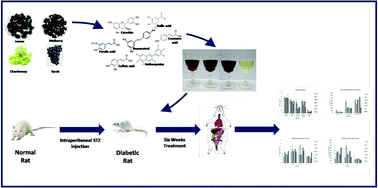The antioxidant effect of mulberry and jamun fruit wines by ameliorating oxidative stress in streptozotocin-induced diabetic Wistar rats
Abstract
Polyphenols act by scavenging reactive oxygen species during oxidative stress and hence are useful in the treatment of metabolic disorders including diabetes. This study describes the effect of polyphenol rich mulberry and jamun wines fed to streptozotocin-induced diabetic rats. To male adult Wistar rats, divided into groups (n = 10 per group) intraperitoneal injection was administered with streptozotocin at 38 mg per kg body weight for inducing diabetes. After confirmation of diabetes, rats divided into groups were fed each day with 5.7 milliliter per kg body weight of mulberry, jamun, white and red grape wines for 6 weeks. One group of animals received resveratrol at 20 mg per kg body weight. After six weeks of treatment, blood glucose, urinary profile, lipid profile, plasma, liver, kidney, brain and eye antioxidant enzyme activities, lipid peroxidation, non-esterified fatty acids (NEFA) and hepatic glutathione (GSH) content were determined. Though wine and resveratrol feeding did not improve the glycemic status of diabetic rats, increases in antioxidant enzymes and GSH content accompanied by reduced NEFA and lipid peroxidation were observed. The kidneys and brains of resveratrol fed rats showed significant reduction in malondialdehyde equivalents, exhibited an improved antioxidant status of tissues and an increased glutathione content. The findings suggested that the wines can ameliorate the consequences of diabetes due to their antioxidants.


 Please wait while we load your content...
Please wait while we load your content...